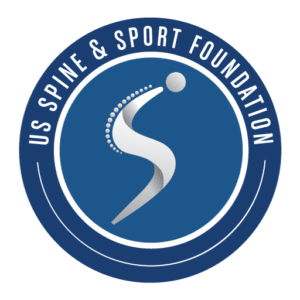John Mayer, DC, PhD and collaborators publish manuscript on the impact of active, passive, and manual therapy interventions on downstream healthcare utilization in veterans with low back pain
John M. Mayer, DC, PhD and collaborators from various institutions recently published a manuscript in the Physical Therapy & Rehabilitation Journal:
Mayer JM, Highsmith MJ, Maikos J, Patterson CG, Kakyomya J, Smith B, Shenoy N, Dearth CL, Farrokhi S. The influence of active, passive, and manual therapy interventions on escalation of health care events after physical therapy care in veterans with low back pain. Physical Therapy. 2024;July 20 (online ahead of print). doi: 10.1093/ptj/pzae101
The manuscript reports on findings from the grant: Resolving the Burden of Low Back Pain in Military Service Members and Veterans: A Multi-Site Pragmatic Trial (U.S. Department of Defense, W81XWH-18-2-0007)
The manuscript is found here:
https://academic.oup.com/ptj/advance-article-abstract/doi/10.1093/ptj/pzae101/7717434?redirectedFrom=fulltext
Abstract
Objective: The objective of this study was to examine the associations between active, passive, and manual therapy interventions with the escalation-of-care events following physical therapist care for veterans with low back pain (LBP).
Methods: A retrospective cohort study was conducted in 3618 veterans who received physical therapist care for LBP between January 1, 2015 and January 1, 2018. The VA Corporate Data Warehouse was utilized to identify LBP-related physical therapist visits and procedures, as well as opioid prescription and non-physical therapy clinic encounters. The association between physical therapist interventions with 1-year escalation-of-care events were assessed using adjusted odds ratios from logistic regression.
Results: Nearly all veterans (98%) received active interventions but only a minority (31%) received manual therapy. In the 1-year follow-up period, the odds of receiving an opioid prescription were 30% lower for those who received manual therapy in addition to active interventions, as compared with patients who received only active interventions. Moreover, the odds of receiving primary care, specialty care, and diagnostic testing were 30–130% higher for patients who received electrical stimulation or more than 1 passive intervention in addition to active treatments, as compared with patients who received only active interventions.
Conclusion: The use of manual therapy along with active interventions was associated with reduced prescription of opioids, while utilization of specific passive interventions such as electrical stimulation or multiple modalities in conjunction with active interventions resulted in increased escalation-of-care events.
Impact Statement: The use of active interventions, which is supported by most Clinical Practice Guidelines (CPGs), was the cornerstone of physical therapist care for veterans with LBP. However, the use of CPG-recommended manual therapy interventions was low but associated with reduced opioid prescriptions. The use of 2 or more different passive interventions along with active interventions was common (34%) and associated with less-than-optimal escalation-of-care outcomes.
Key Words: Exercise Therapy, Guideline Adherence, Low Back Pain, Manual Therapy, Veterans

Leave a Reply
Want to join the discussion?Feel free to contribute!